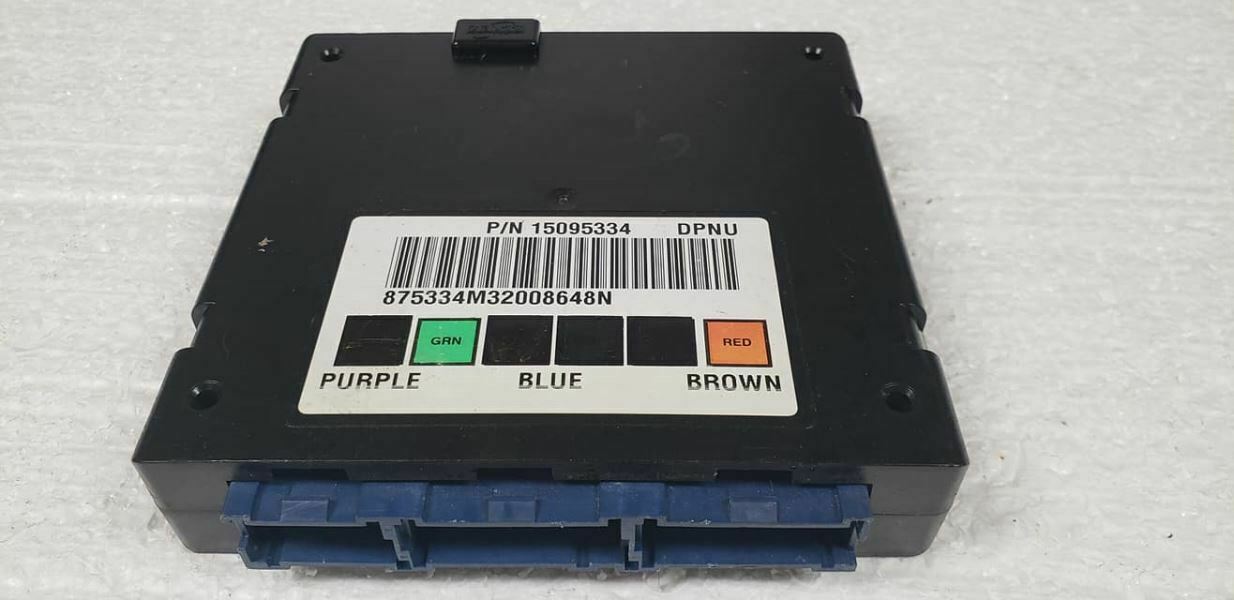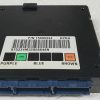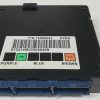Restore Control Over Your GM Van’s Electronics
Are you tired of chasing electrical gremlins in your 2002-2005 GMC Safari or Chevrolet Astro? From flickering dome lights and unpredictable power locks to a security light that won’t turn off, a failing Body Control Module (BCM) can cause a host of frustrating and seemingly unrelated issues. As the central command center for your vehicle’s body electronics, a faulty BCM can disrupt daily operation and even compromise safety. This direct-replacement BCM is the definitive solution, arriving pre-programmed with the latest GM software specifically for your vehicle’s VIN.
A Technician’s Notebook
I remember a 2004 Safari that came into the shop with a classic BCM failure story. The owner was at his wit’s end. The radio would turn on by itself, the power door locks worked intermittently, and occasionally, the van wouldn’t start, showing only a security light. He’d already replaced the battery and checked fuses. We connected our scan tool and found multiple communication loss codes (U-codes) pointing to the BCM. After confirming power and ground at the module were good, we knew the internal logic had failed. Installing a VIN-programmed BCM like this one resolved all issues in under an hour. It’s a common failure point I’ve seen dozens of times on these vans, and a new module is the only reliable fix.
Is Your GM Vehicle Exhibiting These Symptoms?
A failing BCM can manifest in many ways. If you’re experiencing any of the following, this module is the likely solution:
- ✔ Erratic or non-functional interior and exterior lights (headlights, dome lights, dash lights).
- ✔ Power windows or door locks that operate on their own or not at all.
- ✔ The security or anti-theft system light stays on, preventing the engine from starting.
- ✔ Inconsistent or non-working radio and climate controls.
- ✔ False warnings on the instrument cluster (e.g., ‘door ajar’ light).
- ✔ Diagnostic trouble codes (DTCs) related to communication loss, such as U0140, or specific BCM internal fault codes.
A Straightforward Guide to Installation
Replacing the BCM on your GMC Safari or a similar GM vehicle is a manageable job for a DIYer with basic tools. Our pre-programming service eliminates the need for expensive dealer-only tools.
- Safety First: Always disconnect the negative terminal from your vehicle’s battery and wait a few minutes to ensure all systems are powered down.
- Locate the BCM: On the GMC Safari and Chevy Astro, the BCM is typically located in the center of the dashboard, often accessible by removing the lower dash panels or glove box. On trucks like the Silverado or Sierra, it’s usually found under the steering column.
- Disconnect and Remove: Carefully unplug the electrical connectors from the old BCM. They have locking tabs that need to be depressed. Once disconnected, unbolt or unclip the module from its mounting bracket.
- Install the New Module: Mount the new BCM in the same position as the old one and securely plug in all electrical connectors. You should hear a ‘click’ as they lock into place.
- Reconnect and Test: Reconnect the negative battery terminal. Turn the key to the ‘On’ position and test all body functions—lights, locks, windows, radio, etc.—to confirm proper operation.
Important Post-Installation Information
While this module is designed for a simple installation, some vehicle systems may require a relearn procedure. Please be aware of the following possibilities:
- Airbag System Sync: In some cases, the airbag warning light may illuminate after installation. This indicates a sync is needed between the new BCM and the Sensing and Diagnostic Module (SDM). A professional scan tool is required to perform the ‘Setup SDM Primary Key in BCM’ procedure to resolve this.
- Brake Pedal Position Relearn: A recalibration of the brake pedal position sensor might be necessary to ensure correct brake light operation and to satisfy the traction control system.
- No Core Charge: You can keep your old part, as there is no core charge or return required for this BCM.
Expert Disclaimer: Vehicle systems vary. For procedures specific to your exact model, consulting a factory service manual or a certified technician is always the best practice.
Verified Vehicle Compatibility
This Body Control Module is a direct replacement for a wide range of General Motors trucks and vans. It is compatible with part numbers 15063578, 15081796, 15095334, 19208537, DKAK, and DPNU. Please verify that your original module carries one of these numbers to ensure perfect fitment. Key compatible models include:
- ✔ 2002-2005 GMC Safari
- ✔ 2002-2005 Chevrolet Astro
- ✔ 2002-2005 Chevrolet Blazer S10 / GMC Jimmy S15
- ✔ 2002-2004 Chevrolet S10 / GMC Sonoma
- ✔ 2002 Chevrolet Silverado & GMC Sierra (1500, 2500, 3500)
- ✔ 2002 Chevrolet Tahoe, Suburban, Avalanche & GMC Yukon, Yukon XL (4×2 models)
- ✔ 2002 Cadillac Escalade (4×2 models)
Frequently Asked Questions
Do I need to program this BCM?
No. We handle the programming for you before shipment. Simply provide your vehicle’s 17-digit VIN during checkout, and the module will arrive ready to install with the latest GM software for your specific vehicle.
Where is the BCM located on my 2003 GMC Safari?
On the 2002-2005 GMC Safari and Chevy Astro, the Body Control Module is located behind the dashboard, in the center area, typically accessible by removing the glove box or lower dash trim panels.
What if my airbag light turns on after I install this?
This is uncommon, but if it happens, the BCM and the airbag module (SDM) need to be synced. This requires a professional-grade scan tool to perform a ‘Setup SDM Primary Key’ procedure. A local repair shop can typically perform this service.
Is a core return required for my old part?
No. We do not require you to send your old BCM back. There is no core charge associated with this purchase, saving you time and return shipping costs.
Will this fix my van not starting?
If your no-start issue is caused by the anti-theft system (a common BCM failure), then yes, this module is designed to solve that problem. When the BCM fails, it can incorrectly activate the security system, preventing the engine from cranking.


